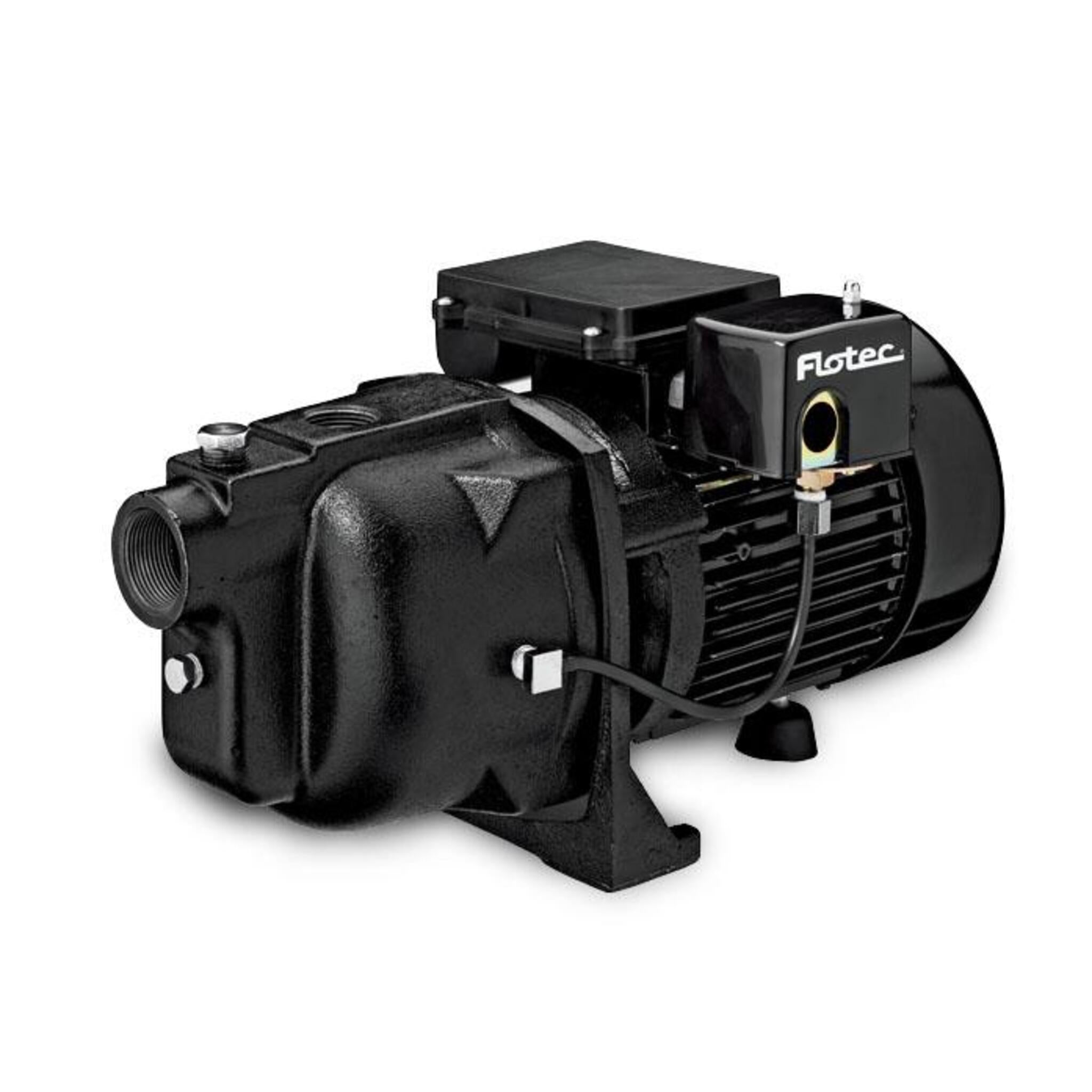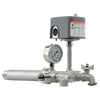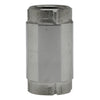Categories
- Shop All (5642)
-
-
- Hi-Vis Chainsaw Safety (14)
- Hi-Vis Coveralls and Overalls (25)
- Hi-Vis Hoodies and Shirts (49)
- Hi-Vis Jackets (35)
- Hi-Vis Pants (21)
- Hi-Vis Rain Wear (47)
- Hi-Vis Vests (51)
- Winter Hi-Vis Bombers and Parkas (25)
- Winter Hi-Vis Coveralls and Overalls (22)
- Winter Hi-Vis Hoodies (4)
- Winter Hi-Vis Pants (3)
- Winter Hi-Vis Vests (6)
-
- Bib Overalls (10)
- Bombers and Parkas (16)
- Coveralls and Overalls (18)
- Disposable Garments (12)
- Flannel and Plaid Work Shirts (20)
- Heated Work Wear (7)
- Hoodies and Sweaters (11)
- Industrial Rainwear (49)
- Pants and Shorts (60)
- Shirts and Sweaters (33)
- Thermal Underwear (37)
- Vests (17)
- Work Jackets (75)
-
-
-
-
- Brooms (2)
- Dust Mops (0)
- Dust Pans and Brushes (4)
- Flow Thru Tools (2)
- Microfiber Mops (0)
- Pool and Tank Tools (2)
- Scrubbers and Scrapers (1)
- Soap and Sanitizer Dispensers (0)
- Sprayers (1)
- Squeegees (1)
- Toilet Brushes and Plungers (3)
- Trash Cans & Bags (8)
- Wet Floor Signs (0)
- Wet Mops and Buckets (4)
-
- Bars and Prying Tools (21)
- Bolt Cutters and Shears (18)
- Chisels and Punches (9)
- Combination Hand Tool Sets (12)
- Extractors (13)
- Files (6)
- Gear Pullers (14)
- Hammers and Mallets (14)
- Hand Saws (22)
- Hex Keys (12)
- Layout and Distance Lasers (1)
- Marking Tools (1)
- Measuring Tools (26)
- Pliers (57)
- Precision Measuring and Testing Tools (24)
- Propane Torches (8)
- Screwdrivers and Nutdrivers (22)
- Sockets (66)
- Tap and Die Sets (11)
- Tool Boxes (27)
- Utility Knives (15)
- VDE Tools (7)
- Wire Cutters and Strippers (14)
- Wrenches (22)
-
- Beveling and Deburring (17)
- Curb and Valve Keys (20)
- Drilling and Tapping (12)
- Extended Impact Sockets (3)
- Flaring and Rerounding (7)
- General Pipe Working Tools (23)
- Guillotine Pipe Cutters (2)
- Hydrostatic Test Pumps (12)
- Internal Pipe Cutters (6)
- Manhole Testing (4)
- PE Peelers (8)
- Pipe Reamers (4)
- Pipe Threading (17)
- Pipe Wrenches (24)
- Plastic Pipe Joint Kits (4)
- Plastic Pipe Saws (5)
- Power Drive (13)
- Quick Release Cutters (15)
- Ratchet Shears (9)
- Ratcheting Wrenches (12)
- Rotary Cutters (3)
- Shut Off Tools (9)
- Soldering Torches (3)
- Vises (7)
-
- Angle Grinders (6)
- Batteries and Chargers (18)
- Bench Grinders (7)
- Circular Saws (3)
- Combo Tool Kits (10)
- Cordless Fans (6)
- Cordless Lighting (15)
- Cut Off Saws (4)
- Drills and Drivers (8)
- Grease Guns (3)
- Impact Drivers (5)
- Jobsite Radios and Speakers (8)
- Lifestyle (7)
- Mitre Saws (2)
- Reciprocating Saws (4)
-
- Angle Grinder Wheels and Brushes (23)
- Bench Grinder Wheels (7)
- Circular Saw Blades (11)
- Drill and Driver Bits (26)
- High Speed Gas Saw Blades (3)
- Holesaws (11)
- Impact Sockets (25)
- Jig Saw Blades (2)
- Oscillating Multi Tool Blades (1)
- Portable Chop Saw Blades (4)
- Power Tool Storage (5)
- Reciprocating Saw Blades (8)
-
-
-
-
- Air Fresheners (2)
- All Purpose Cleaners (19)
- Bowl and Washroom (8)
- Coffee and Breakroom (19)
- Degreasers (3)
- Dishwashing (4)
- Disinfectants and Sanitizers (1)
- Drain Openers (7)
- Hand Cleaners (10)
- Laundry Cleaners (10)
- Paper Products and Wiper Rags (24)
- Scale Removers (4)
- Urinal Pucks and Liquids (5)
- Wet Wipes (2)
-
-
- Ball Valves (13)
- Black and Galvanized Steel Fittings (16)
- Bronze Pipe Fittings and Nipples (13)
- Butterfly Valves (4)
- Check Valves (18)
- Flexible Connectors (4)
- Gate and Globe Valves (5)
- Knife Gate Valves (9)
- Pipe Fitting Accessories (4)
- Schedule 80 PVC Fittings (27)
- Stainless Steel Fittings and Valves (24)
- Victaulic Grooved Fittings (23)
What are Well Pumps?
For homes and properties not connected to a municipal water system, well pumps are essential. These powerful devices extract water from underground wells and deliver it to your taps, ensuring a consistent and reliable water supply for residential, agricultural, or even industrial use. Whether you're planning a new well installation or looking to replace an old system, understanding how well pumps work—and which one you need—is the first step.
Types of Well Pumps
There are four main types of well pumps, each suited to different well depths and use cases.
1. Submersible Pumps
How they work: Installed inside the well and fully submerged, submersible pumps use impellers driven by an electric motor to push water to the surface.
Best for: Deep wells (100 to 400 feet), though they can work in shallow setups too.
Pros:
Energy-efficient and long-lasting (up to 25 years).
High water pressure and volume output.
Cons:
Requires removal from the well for servicing.
Prone to corrosion in sandy or sediment-rich environments.
2. Jet Pumps
How they work: Positioned above ground, jet pumps create suction using an impeller. There are two subtypes:
Single-pipe jet pumps for shallow wells (<25 feet).
Double-pipe jet pumps for deeper wells (up to 100 feet).
Pros:
Dependable for shallow wells.
Above-ground location makes servicing easier.
Cons:
Less energy-efficient than submersible pumps.
Needs to be primed before operation.
3. Centrifugal Pumps
How they work: These pumps rely on centrifugal force to draw water from shallow wells where the water table is near the surface.
Pros:
Simple, low-cost design.
Easy to maintain.Cons:
Not suitable for deep wells.
4. Hand Pumps
How they work: These manual pumps draw water with human effort and are usually installed on shallow wells.
Best for: Remote or emergency setups where electricity isn't available.
How Well Pumps Work
Well pumps function by either pushing or pulling water from underground.
Submersible pumps push water upward through impellers and need to stay submerged in water to operate correctly.
Jet pumps use suction created by a high-speed jet of water that forms a vacuum to lift more water from below.
Both types often work in tandem with a pressure tank, which regulates water pressure and prevents the pump from cycling on and off too frequently, improving energy efficiency and longevity.
Explore Well Pumps at Our Canadian Warehouse
Flotec Cast Iron Shallow Well Jet Pumps with Pre-Wired Pressure Switch
Flotec Cast Iron Shallow Well Jet Pumps with Pre-Wired Pressure Switch offer reliable, high-performance water delivery for shallow wells up to 25 feet deep. Built with durable cast iron, these pumps are ideal for homes, cabins, and trailers, featuring easy installation with 1-1/4" suction and 1" discharge ports. Each model includes a pre-wired 30/50 pressure switch, dual voltage motor (115/230V), and is available in 1/2 HP (8.5 GPM), 3/4 HP (19 GPM), and 1 HP (21 GPM) configurations to suit varying water demands.
Flotec FP410515H 1/2 HP Cast Iron Shallow Well Jet Pump/Tank System
The Flotec FP410515H 1/2 HP Cast Iron Shallow Well Jet Pump/Tank System is designed to provide reliable water pressure for homes without municipal water access. Featuring a durable cast iron pump and a compact 5-gallon pressure tank with a pre-mounted pressure switch, it delivers up to 5.6 GPM with a 25-ft maximum lift and 63 PSI maximum pressure. Operating quietly and efficiently, it's ideal for shallow well applications. Installation requires 1" foot and check valves, available in brass, stainless steel, or PVC. The system runs on 115V, draws 7.2 amps, and includes a 1-year limited warranty.
Flotec FP3342 1-1/2 HP 20 GPM Submersible Well Pump
The Flotec FP3342 1-1/2 HP 20 GPM Submersible Well Pump is an economical, energy-efficient solution for 4" or larger water wells, ideal for home and farm use. It features a 1-1/2 HP, 240V electric motor paired with a 20 GPM, 9-stage pump, and a 3-wire design with a control box included. Designed for durability and performance, it offers a 1-1/4" discharge, a floating stack for sand resistance, and corrosion-resistant stainless steel housing, backed by a 3-year limited warranty.
FAQs
1. How do I know if my well pump is going bad?
Common signs of a failing well pump include sputtering faucets, low or inconsistent water pressure, strange noises from the pump, and higher electricity bills. If you notice these symptoms, it's a good idea to test the pump and check the pressure switch, control box, and the well itself for potential issues before it completely stops working.
2. Can a well pump run out of water?
Yes, a well pump can run out of water if the well itself runs dry, often due to drought, overuse, or a dropping water table. Running a pump without water can damage the motor, so many modern systems include a low-water cutoff switch or sensor to prevent dry running and protect the pump.
3. How long does a typical well pump last?
Most well pumps last 8 to 15 years, depending on usage, water quality, and maintenance. Submersible pumps tend to last longer than jet pumps. Regular maintenance, like checking pressure switches, inspecting the pressure tank, and ensuring the well stays clean, can significantly extend the pump’s lifespan.
4. How can I protect my well pump during a power outage?
To safeguard your well pump during outages, consider installing a manual or automatic transfer switch with a backup generator. Also, ensure your pressure tank has enough capacity to provide water for short durations. For longer outages, turning off the pump’s breaker can protect it from surges when power is restored.
5. What maintenance should I perform on my well pump system?
Routine maintenance includes checking the pressure switch and tank, inspecting the electrical components, cleaning sediment filters, and testing water quality annually. Keeping the area around your wellhead clean and sealed also helps prevent contamination and extends the life of your pump system.

















